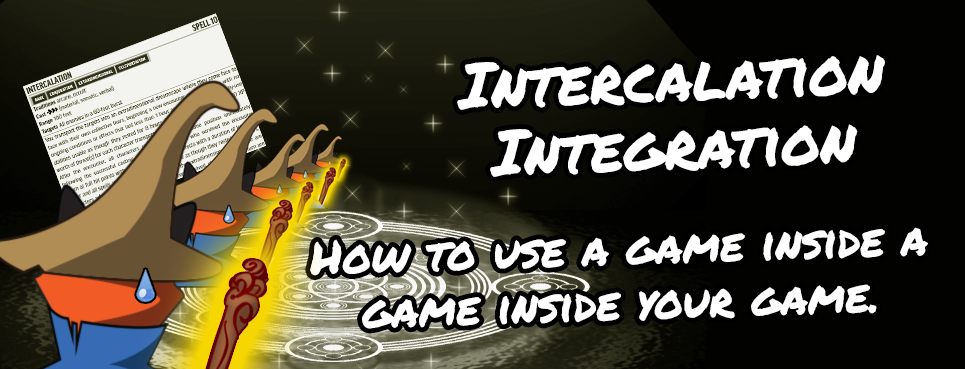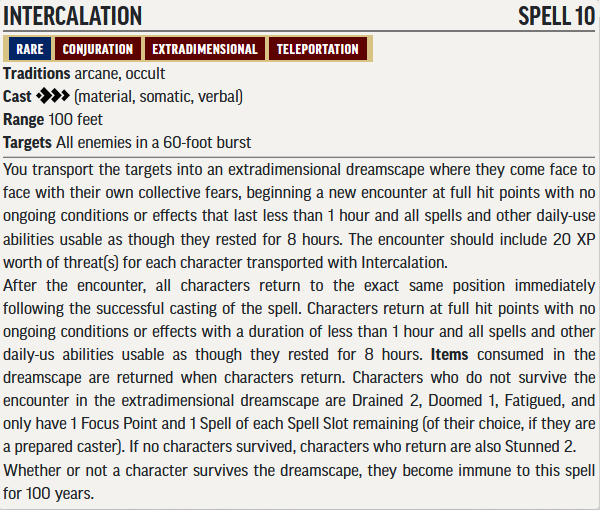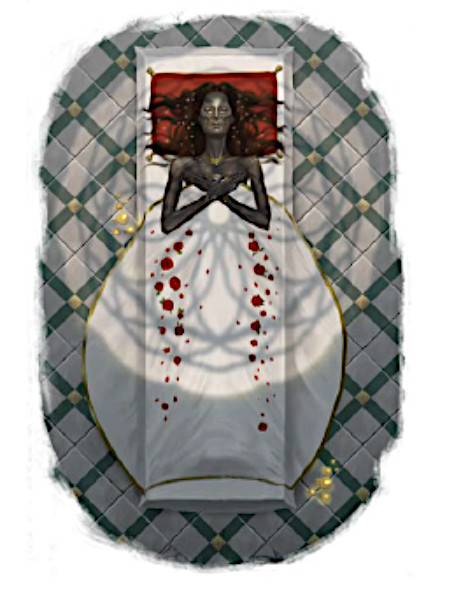Have you ever heard of Scheherazade? As both a major character and storyteller in 1,001 Arabian Nights, she is a classic example of a frame narrative: a story-within-a-story. Many tabletop gamers know her from the infamous Magic: the Gathering card “Shahrazad“, which creates a “game-within-a-game”. Now you should know this is the card banned in every major format of the game strictly because she causes the game to take forever. In a card game where you can play multiple copies of the same card, copy a card, or even use the card inside of a subgame to create a sub-subgame, this is a big problem. But in an RPG? Well, intercalation is a powerful tool that, when used sparingly, can help strengthen and enhance your narrative driven tabletop roleplaying game!
Also a Richard Garfield favorite.
Game-within-a-Game Campaign-within-a-Campaign
Back in the 3.5e days, I once invited my friends to help me play test a new RPG. It was an extremely simple game with rules you learn as you go along; All they knew it is used a d20 for checks and had secret modifiers. Their characters had no memory, clothes, gender, or hair. They could speak to one another and fumble around this lightless maze, but the only discernible feature in the first room was a dripping noise. After some adventuring one of them found a torch, confirming their featureless “blank” bodies. After some more exploring, they found some wish-bones inside a wall. One of my players immediately snapped a wishbone I held up and yelled “I wish I had my own torch!”: Bam! A second torch appeared! All hail the second light-bringer! The next PC tried snapping a wishbone, but when they failed their character’s rib cage snapped instead, causing them to slowly bleed to death. A minute later they reappeared in the starting room… and once the players realized they would respawn the group descended into the best kind of chaos. Teams were formed. Alliances were broken. Torches were stolen. It wasn’t until one of the “light-bringers” returned to the “spawn room” that they solved the game’s “mystery”: On the ceiling of the room was their real characters, suspended by hooks in the ceiling! Poof. All the players are back where we last left them, freeing themselves from an illusory maze with just enough time to watch the villain run off with the McGuffin!
This kind of trick only works sparingly, and only with a group who is willing to somewhat suspend their player agency for the sake of a gimmick like this. Now ultimately this is just a heavily expanded mini-game/sub-system with minimal explanation to enhance verisimilitude, but there’s nothing wrong about using a mini-TTRPG to resolve a challenge that Pathfinder 2e isn’t as well equipped to resolve. Heck, if you want to look for one TTRPGs for Trans Rights in Texas! is offering 493 RPGs for $5 (or more), with all proceeds benefiting the Transgender Education Network of Texas (TENT) and Organización Latina de Trans en Texas (OLTT). To a lesser degree, systems like Chases and Starstone: the Ascension are games within a game, although in that case you aren’t playing your character so much as playing your character playing a game. Either way, these kinds of “systems inside systems” help create memorable sessions that can serve as high-points for characters that level and help remind your players that there is more to a narrative than standard combat and skill challenges!
Intercalation can be used with themes of dreams/visions, time magic, illusions, divine intervention, or even using clones or simulacrum. It works best used as a hurdle against someone specializing in that magic, as a way to bring a party back together, as a filler-encounter when two or more members of the party can’t make a session, to resolve a solo-quest relevant to a single-player between sessions, to unlock the final power of a seed of power/relic, as a cost for bringing back as a dead PC, or resolve a TPK (very sparingly).
But what if your players only want to play Pathfinder? Well, then give them more Pathfinder! There was no reason I couldn’t have used the same system for the illusion I described earlier. I didn’t even have to “trick” my players; It could have just been a spell cast by an enemy that resolves itself based on how well the PCs perform inside a sudden dreamscape. These kinds of systems tend to only use skill checks so players don’t “forget” what happens in the primary encounter, but if the enemy uses the ability at the beginning of the encounter you can often salvage the remaining encounter without disorienting your players by making the victory or failure condition of the “mini-game” a sort of “set the players to the following status: Full/Half-HP, Buff/Debuff, Free Daily Prep/Reduced Cooldowns, etc… In that case the “subgame” functions as a “redo” out of character, while in character still being an “encounter inside of an encounter”. In which case, of course, you should also award some percentage of encounter XP for the threats they faced inside the dream.







